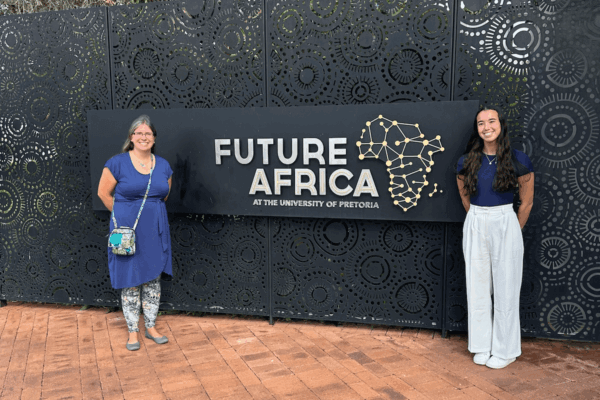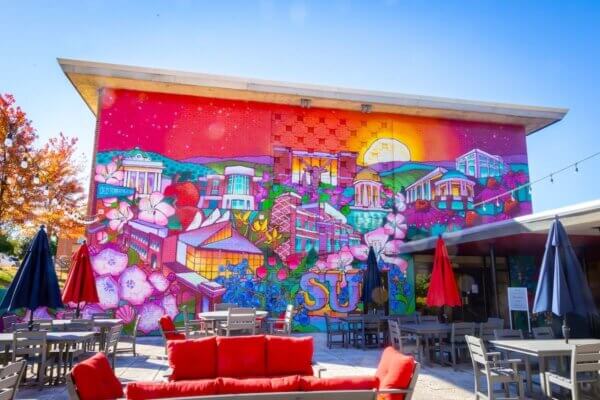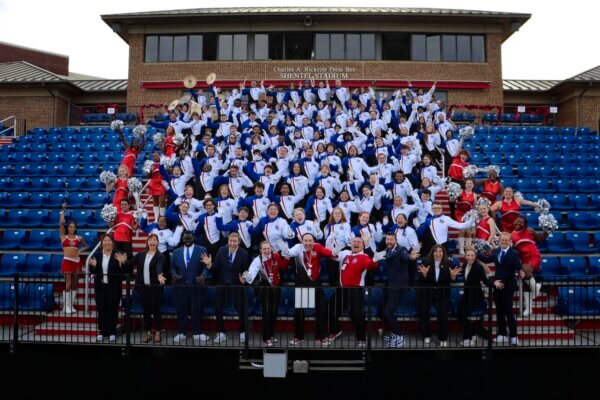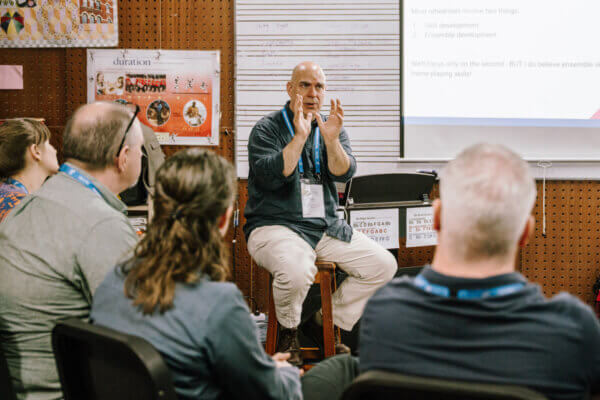Marriage Across Cultures
Implementing Virtual International Exchange in my First Year Seminar Course

This last semester I implemented Virtual International Exchange (VIE) in my classroom or better known in North America as Collaborative Online International Learning (COIL). The basic idea behind COIL is to have classes in universities in different parts of the world exchange and collaborate with each other. Students generally begin with an ice breaker where they get to know each other and share information about themselves. They then discuss the course material and work on a collaborative project. Finally, they reflect on the experience and how the international culture is both similar and different than their own.
COIL has grown exponentially the last couple of years as technology has made it easier to connect with those abroad and with universities realizing the increasing importance of internationalizing their campus. Many employers are looking for those who have strong cultural competency skills, ability to work in teams, and adept in communicating digitally. For instance, many corporations now have global offices where team members are expected to work with those of other cultures and backgrounds. Among the benefits of COIL is that it is low-cost since it is often executed on platforms that universities and students already subscribe to such as Zoom, Canvas or Facebook. The inexpensive nature of COIL addresses higher education’s concerns around equity and accessibility as most students cannot afford to travel abroad and thus would otherwise be unable to attain a global experience.
I decided to try COIL in my First Year Seminar (FYS) course “Marriage and Sexuality in Islam”. The FYS course was an ideal place to try COIL as the first-year program has a specific focus on “Going Global”. For instance, among the goals of FYS are “to generate awareness of global issues” and “to promote perspective taking within a global context”. In FYS, students are expected to look at a problem globally and synthesize different perspectives in the process of creating their own. Moreover, research demonstrates that those students who experience COIL in their first year are more likely to travel in their subsequent years. In the Shenandoah University context, this could mean that students who went through a COIL course might be more inclined to apply for a Global Citizenship Project (GCP) spring break trip or a Global Experiential Learning (GEL) study abroad opportunity. FYS, GCP, and GEL all fit within the larger Shenandoah strategic plan which emphasizes “global outreach” and “respect for diverse cultures, experiences, and perspectives”.
One of the challenges of COIL is finding suitable international partners but at Shenandoah we are fortunate to have the Jamal Barzinji Project which has already established strong connections in universities in Muslim-majority countries and works to develop innovation in higher education through global collaboration. As the director of the Project, I work to nurture the partnerships that we have in the Balkans with the University of Sarajevo and South East Asia with the International Islamic University Malaysia (IIUM). Through the first phase of the Project, we were able to forge deep relationships with the various universities after we both hosted and visited each other and met to discuss our findings at a Fall Colloquium. For my FYS class, I reached out to Syahirah Isham who is an alumni of the first phase and recently graduated from IIUM. She put together a small group of her friends to be on a group text via WhatsApp while I asked my students to join the group on my end.
As I introduced the idea to my students of exchanging virtually with Malays, I immediately noticed that it shifted their perceptions of Islam and Muslims. Many Americans see Islam as an Arab religion and locate it within the Middle East, specifically Saudi Arabia. I often spend the first week of my classes debunking these stereotypes with us discussing how films, such as Aladdin, present the Arab and Muslim world as a desert wasteland full of magic and wonder. As a group exercise, I displayed a borderless world map and asked them to identify certain countries. A good portion of my students were able to locate Saudi Arabia but when I asked them to point out Malaysia only one was able to figure it out. For many Americans, Southeast Asia is generally unknown to them since it is not connected to the business interests of China or the political conflicts of the Middle East.

We kicked off the exchange with students introducing themselves by posting a picture of themselves and a short bio which might include information about their majors and families. Some students even posted videos of themselves speaking directly to their partners sharing who they were and how they were interested in the exchange. Students were immediately interested in each other’s backgrounds asking questions about siblings, work, and hobbies. For instance, in the discussion it emerged that one of the students had a young child who the students enjoyed looking at pictures of. Similarly, we learned that one of the Malay students worked at a café and bakery and she posted several pictures of the type of foods that they served. As the group discussion continued, Syahirah got engaged leading to a fascinating discussion over engagements and how they are understood in different cultures. The Americans shared that traditionally the man would propose to the woman while the Malays explained that in their culture both genders could propose to each other.


The group text was supplemented with Zoom chat every month which was challenging as the Malays are 12-13 hours ahead of the East Coast of the United States. We therefore scheduled the calls Friday night which was Saturday morning for the Malay students. The calls were a great way for the students to match a name on the group text with a face on the call and for us to delve deeper into the various discussions. For instance, in one exchange, the students discussed the marriage and parents. Many of the Malays shared that the parents were often involved in the marriage process whether as being advisors or helping pick the partner. Moreover, many of the Malays would live with their parents after they got married to be part of the larger family unit and help take care of their parents. However, many of the Americans expressed how many of the marriages that they were familiar with were “self-achieved” in the sense that the couple met each other on their own and only introduced one another to their parents when they were ready to get married. Also, living at home after a certain time, such as after graduating from college, was considered taboo or a sign of “failure” in the sense that the individual or couple were not able to make it on their own.

The course concluded with my students organizing mock weddings as a way to synthesize the information that they learned in the course. Each group was to be a wedding planning agency and they had to perform a wedding that they could organize for a potential Muslim client. Part of the assignment was to consult their Malay partners and get their advice as the mock wedding was supposed to be as realistic as possible. As the various groups presented their wedding, it was clear that the exchange with the Malays had influenced their presentations. For example, in one presentation, the father suggested to his daughter, “Aleena”, that she should get married and named some virtual platforms where she could find a spouse. Initially, Aleena was skeptical but eventually found “Amir” on an online match making site. Once the couple felt that they were right for each other, they made sure to have their parents meet and discuss the possibilities. After some back and forth, the families eventually agreed to the marriage and a wedding was planned!
The COIL experience made me re-realize the importance of peer interaction as an integral part of learning. Traditionally, the professor is the expert and dispenses knowledge to the university classroom. In the COIL model, the professor continues their expert role but now acts also as a facilitator guiding discussions and helping students think through their experiences. Furthermore, the peer-to-peer interaction led to more open discussions and information sharing than in a traditional classroom. While many professors are wonderful facilitators, they still are the experts and play an evaluative role that can be intimidating to the students. At times, I found the students laughing and chatting with each other in ways that would be unbecoming in a traditional classroom setting.
We now hope to scale COIL and make its methods and tools more accessible to other faculty. For instance, the Barzinji Project has launched a new COIL fellows program where a group of faculty from the various partner universities are going through a training together and then will present their collaborations at our Fall Colloquium and potentially an international conference. We hope that virtual exchange will complement our existing in-person exchange programs and give more students and faculty the opportunity to have an international experience.
Younus Y. Mirza is the Director of the Barzinji Project and Scholar in Residence at Shenandoah University. Join the Barzinji Project email listserve.





